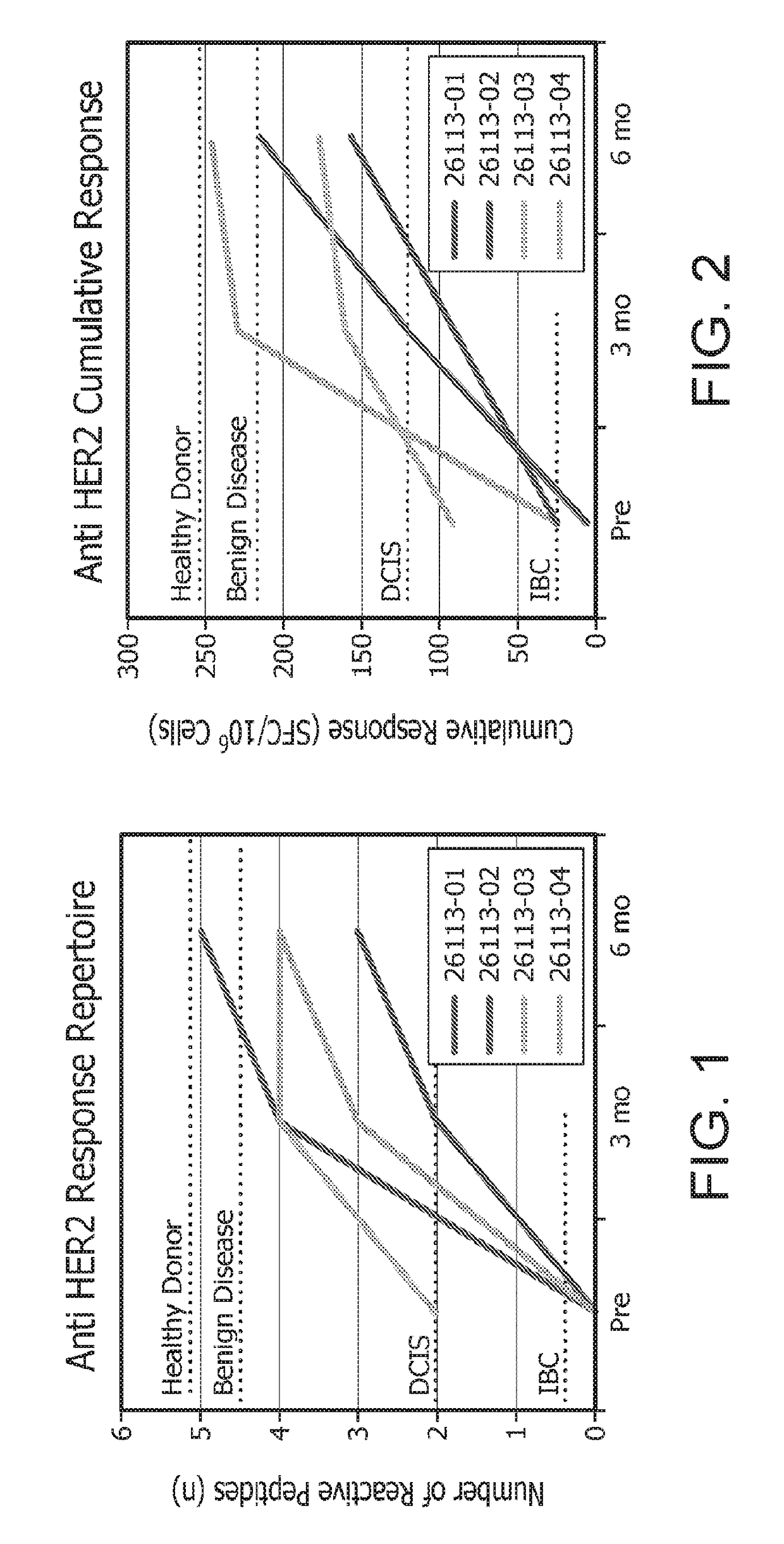In vitro artificial lymph node method for sensitization and expansion of t cells for therapy and epitope mapping
a technology of t cell sensitization and epitope mapping, applied in the direction of antibody medical ingredients, instruments, drug compositions, etc., can solve the problems of loss of antigen specificity and/or function, poor expansion level, and premature activation-induced cell death (apoptosis)
- Summary
- Abstract
- Description
- Claims
- Application Information
AI Technical Summary
Benefits of technology
Problems solved by technology
Method used
Image
Examples
example 2
Expansion of HER2-Specific Th1 Cells
[0219]The following studies were designed to explore the role of adoptive T-cell transfer in restoring anti-HER2 Th1 immunity. T cells are expanded to a level necessary for adoptive therapy and epitope mapping studies while maintaining antigen specificity and cellular function.
[0220]Briefly, in vitro, HER2-specific Th1 cells were generated by co-culture with HER2-peptide pulsed DC1s and expanded using IL-2 alone or IL-2, IL-7, and IL-15. Th1 cells were subsequently expanded either by repeat HER2-peptide pulsed DC1 co-culture or via anti-CD3 / CD28 stimulation. Fold expansion was defined as: (#T-cells post expansion / #T-cells pre expansion); specificity was measured by antigen specific IFNγ production by ELISA.
[0221]As will be shown herein, repeated co-culture of CD4+ T cells with HER2 peptide pulsed DC1s stimulated with IL-2, IL-7, and IL-15 results in a significant expansion of highly specific anti-HER2 Th1 cells, providing a potential population of...
example 3 -
Example 3-Method for Expanding T Cells
[0223]HER2 Specific DC1 Preparation:
[0224]DC precursors were obtained from HER2 breast cancer patients (DCIS) who were vaccinated with HER2 peptide-pulsed DC1 vaccines, as described previously. DC precursors were obtained via tandem leukapheresis / countercurrent centrifugal elutriation. DCs were incubated at 3×106 cells in 1 ml Macrophage Serum-free Medium (SFM-Gibco Life Technologies, Carlsbad, Calif.) with GM-CSF 50 ng / ml (Berlex, Richmond, Calif.) at 37° C. DCs were pulsed with a single HER2 peptide antigen (42-56, 98-114, 328-345, 776-790, 927-941, 1166-1180 (SEQ ID NOS 1-6)); 20 μg / ml) 48-72 hrs after the cells were initially plated. For maturation, DCs were further activated 6 hours later with IFN-γ (1000 U / ml) and the following day with lipopolysaccharide (“LPS”) (10 ng / ml). HER2 specific DC1s were harvested 6 hours after LPS administration at the point of maximum IL-12 production.
[0225]CD4+ T Cell Preparation:
[0226]Lymphocytes were also o...
PUM
| Property | Measurement | Unit |
|---|---|---|
| culture time | aaaaa | aaaaa |
| temperature | aaaaa | aaaaa |
| volume | aaaaa | aaaaa |
Abstract
Description
Claims
Application Information
 Login to View More
Login to View More - R&D
- Intellectual Property
- Life Sciences
- Materials
- Tech Scout
- Unparalleled Data Quality
- Higher Quality Content
- 60% Fewer Hallucinations
Browse by: Latest US Patents, China's latest patents, Technical Efficacy Thesaurus, Application Domain, Technology Topic, Popular Technical Reports.
© 2025 PatSnap. All rights reserved.Legal|Privacy policy|Modern Slavery Act Transparency Statement|Sitemap|About US| Contact US: help@patsnap.com



